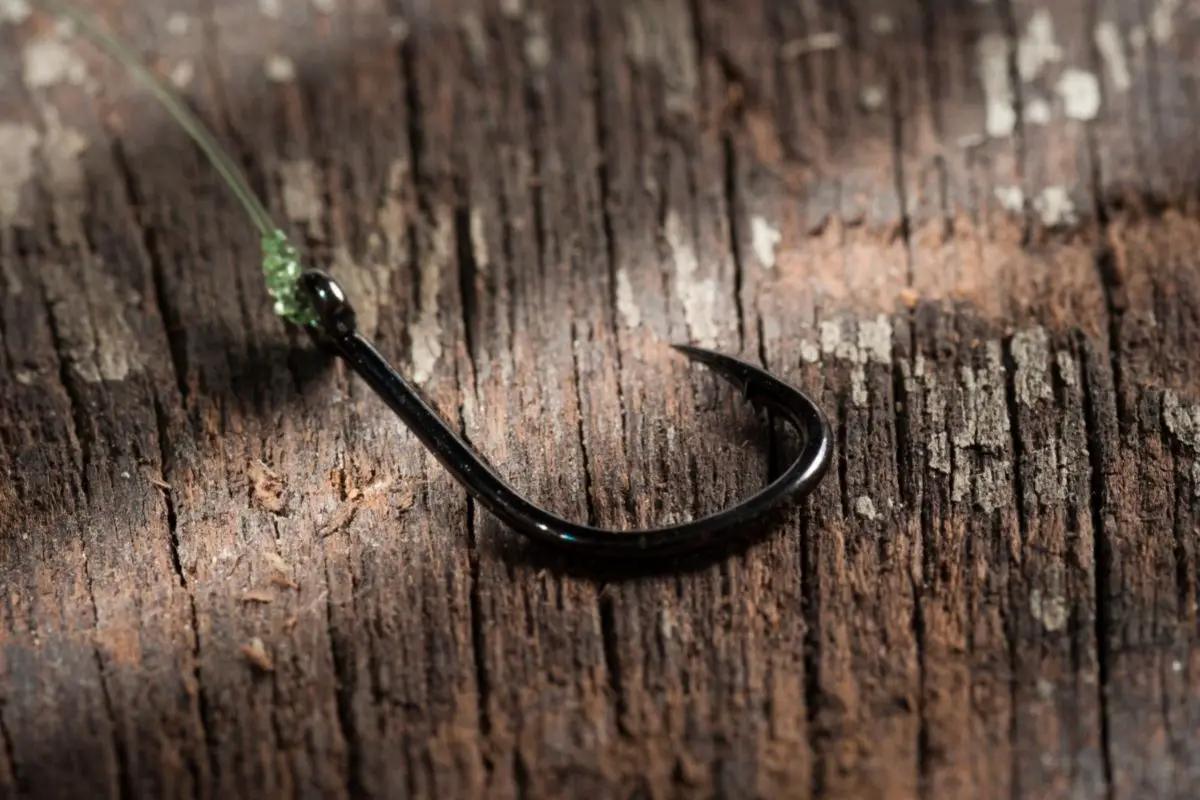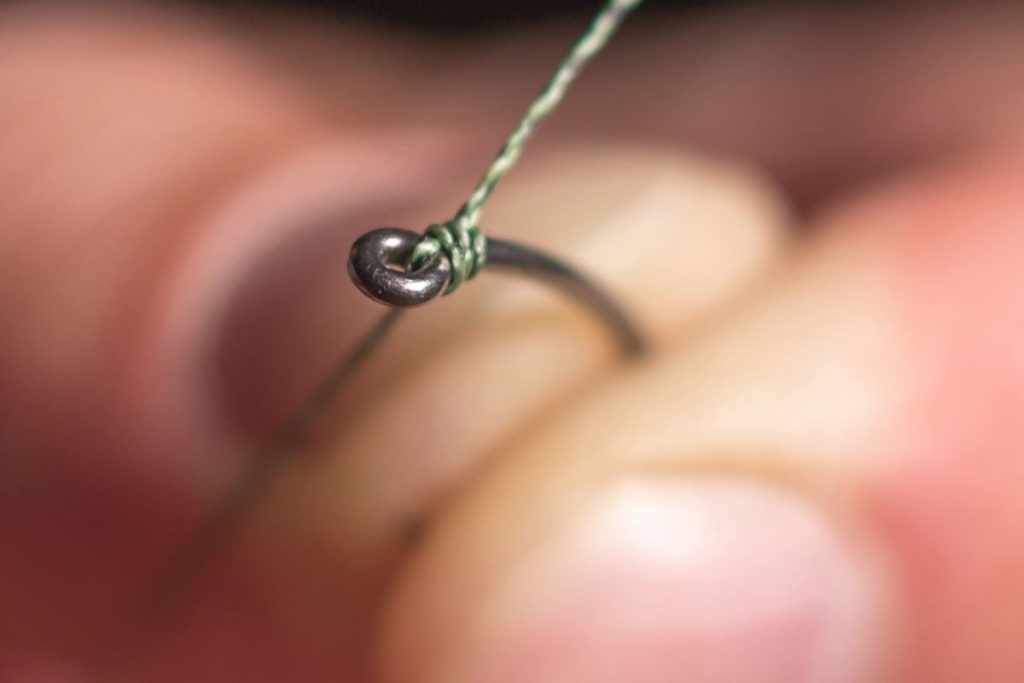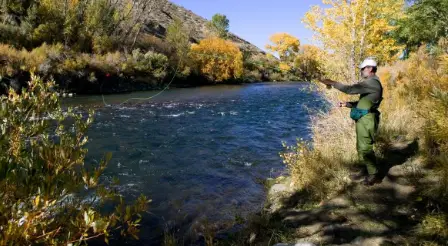Tying a fishing hook can cause confusion and be a difficult task to master.
There are so many ways to do it, it can be hard to decide which method to choose for your fishing experience.
Read on to find out the six best ways to tie a fishing hook.
You’ll learn everything you need to know about how to tie a fishing leader loop in this article.
What is a Fishing Hook and how to tie a fishing leader loop?
A fishing hook is a tool used in fishing. More specifically, it is the tool used to physically catch a fish.
It quite literally hooks the fish by the mouth or the jaw or the lip, therefore trapping them on the end of your fishing line.
This leaves you free to reel them in. They are used universally among professional fishermen and hobbyists.
Hooks sit on the end of your line and have bait attached to entice the fish to swim near. If the fish takes the bait, it is then subsequently caught on the fishing hook.
Different Fishing Hooks Basics: What you Need to Know
Hooks are made in hundreds of different variants. There are standard hooks and specialized species hooks, and everything in between.
Single Hook
A single hook has one eye, and one spike.
Double Hook
A double hook has one eye, and two spikes.
Treble Hook
A treble hook has one eye and three spikes.
Circle Hooks
A circle hook is a more humane hook option. Instead of hooking the fish inside the mouth, a circle hook, hooks onto the lip or the very corner of the fish’s jaw.
All of these hook categories have different branches and subcategories and further subcategories down to the most specialized and specific hook.
What you use will depend on what you are fishing for and where you are fishing, and what equipment you have.
Why is it Important to have a Properly Tied Fishing Hook?

Tyger Leader is reader-supported and may earn a commission when you book or purchase using our links. Learn more about our affiliate disclaimer here.
A properly tied fishing hook is a high priority task for fishing activities. Without it, the line won’t work properly, and you ultimately will not catch any fish.
In order to achieve this, you need to know about fishing knots. Even the strongest knots will fall apart if not fastened correctly.
There are also advantages to a properly tied fishing hook.
- You will lose fewer hooks in the water and to the fish. If the hook is properly tied, then it’s not going anywhere you don’t want it to go.
- Overall, you will more than likely have a less frustrating fishing experience if your hook is tied up tight. You will waste less time adjusting your equipment, and you won’t lose out on the big catches because of a poorly tied hook.
- Learning how to tie a fishhook is part of the fishing hobby. When you learn how to do it right, it will come with a real level of personal satisfaction. You might even catch more fish.
The Top 6 Fish Hook Knots to Know
Let’s explore some of the more popular knots used in a variety of fishing situations.
1. The Knotless Knot
The knotless knot is a good one to have in your knowledge bank.
The Steps
- Measure your line and make it the size that you need.
- Create a loop. This goes at the very end of the line and through the eye of the hook.
- In a downward motion, start to wrap the line around the shank.
- The trick here is to stop when you reach parallel with the tip of the hook. This should take between 6-8 wrapping motions, the number of which is entirely hook dependent.
- Back to Front. Back to Front. Back to Front. Pass the opposite end back through the eye of the hook.
- Tighten up the knot until it’s snug on your hook.
Demonstration
2. Improved Clinch Knot
The Improved Clinch Knot is known for its ability to last.
The Steps
- You start with the end of the line. Bring it through the eye.
- Go back along the body up to ten times, as long as this number is above five.
- With the first loop, put the end through.
- Tighten the knot and cut to size, if necessary.
Demonstration
The Palomar Knot
The Palomar knot takes the title as one of the strongest fishing knots around.
The Steps
- You will need around 6 inches of line, give or take half an inch on either side of this number.
- Double the line over.
- The end goes through the eye.
- Double back.
- Pass the end back through. Do this opposite to how you did it the first time.
- Make a knot, loosely. The hook must be hanging below this knot. It must all be loose.
- Hold this between your thumb and your forefinger in whichever hand that you’re most comfortable with.
- With this loop firmly held in place, move it, so it goes over the hook and above the eye.
- Tighten and clip to finish up.
Demonstration
The Blood Knot
The blood knot brings two lines together.
The Steps
- Firstly, overlap the two lines at the end of each of the lines.
- Twist them together five times.
- The tag end then needs to be put between the two lines.
- Repeat the process, starting from the opposite side.
- Pull the two lines as slow as you can. The key is to be gentle and take your time.
- Clip together at either end.
Demonstration
The Double Surgeon’s Loop
The Steps
- Get a double line and make a loop.
- Put the end of the line through the loop.
- Repeat step two.
- Pull the double line that is not in the loop.
- Cut to size and put a tag on the end.
Demonstration
The Snell Knot
The Snell knot is another popular knot, and very reliable.
The Steps
- Put the end of the line through the eye. Do this twice.
- Simultaneously, create a loop. The loop needs to be just a bit bigger than the hook.
- It’s time to wrap the loop around the hook. You are going to wrap up to 10 times, preferably 8, or 9.
- These need to be tight loops.
- The line needs to be pulled tight now.
Demonstration
Final Thoughts
Hopefully, by now, you will have learned how to make six tried and tested fishing hook knots.
All of these knots can be used to tie a fishing hook.



